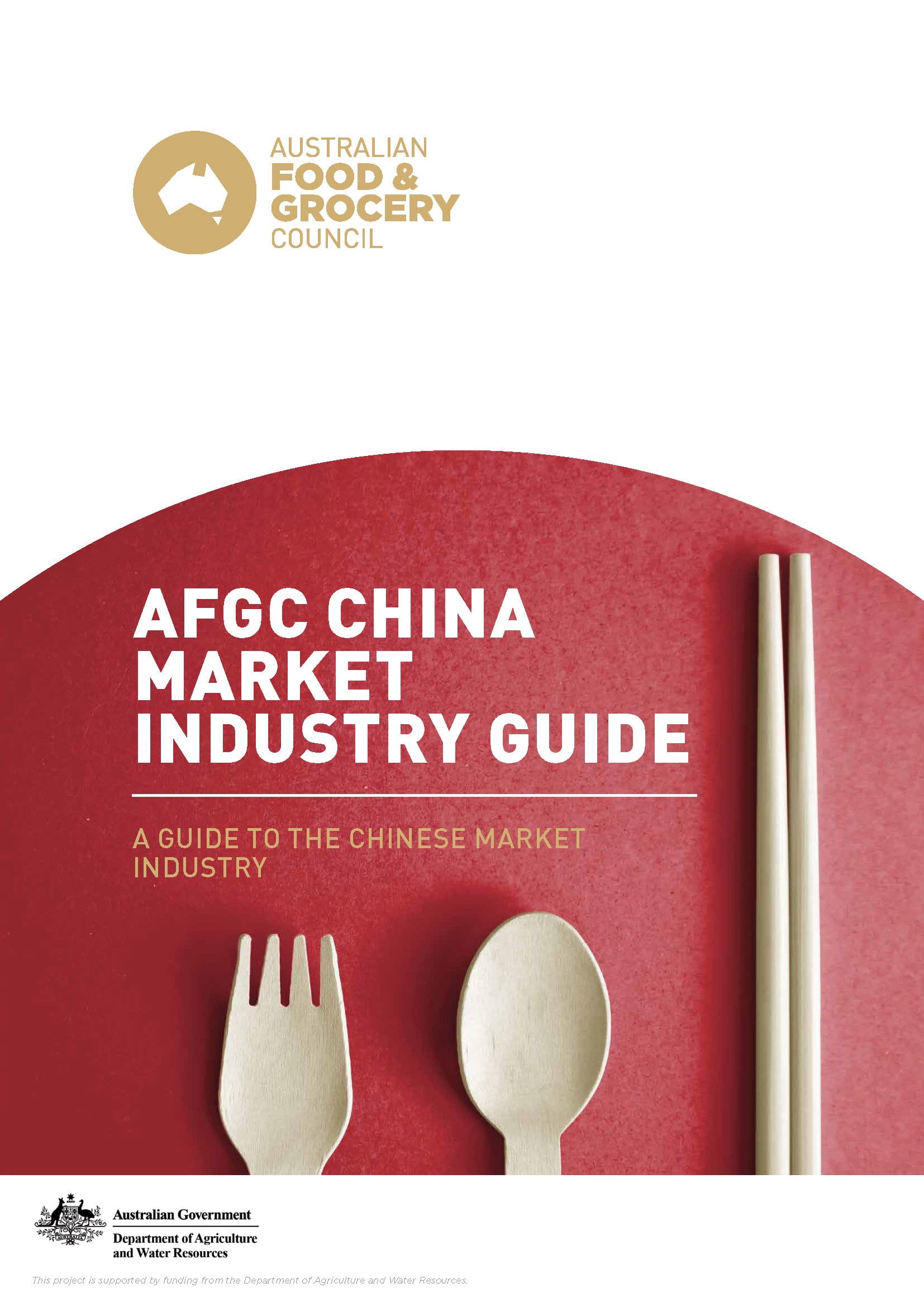China Market INDUSTRY Guide
This Industry Guide and accompanying case study provides comprehensive information on what is required to secure sustainable China market access for food, beverage and grocery exports.
Many exporters find themselves overwhelmed by the complexity of China’s food import regulations.
The Australian Food and Grocery Council (AFGC) and Peloris Global Sourcing, with support from the Department of Agriculture and Water Resources, has developed an industry guide to help demystify the China market. As outlined below, the guide provides a wealth of information on key elements required to successfully export food, beverages and groceries to China.
Part A: China Food Safety Regulations
There are currently over 30 laws, regulations, and measures governing the safety of China food export and imports however the most important Laws for exporters to be familiar with is the China Food Safety Law (2015) of the People’s Republic of China and the E-Commerce Law (2018) of the Peoples Republic of China (the latter to come into effect on 1 January 2019).
Page 4
Part B: China Food Import Regulatory Bodies
China food import regulatory bodies fall under the authority of the ‘Ministries of the State Council’ and the ‘Departments of the State Council’. Broadly speaking, the former is responsible for policy development, safety standards, audits and accreditations whereas the latter is responsible for the implementation, management and oversight of the various policies, procedures and practices.
Page 6
Part C: China Food Safety Management Systems & Controls
The General Administration of Customs of China has implemented a range of safety management systems to ensure the health and safety of imported foods. The General Administration of Customs of China has a general target set in the 13th Five-Year Plan (2016–2020) to realize modernisation of the imported foods safety management system and capability before the Year 2020.
Page 11
Part D: China Import Pathways
For food exporters, there are two main pathways to China; via general trade or Cross Border E-commerce (CBEC) trade. Exporters should validate food products have market access. The Department of Agriculture and Water Resources maintains a database of importing country requirements for agriculture products—the Manual of Importing Country Requirements or MICoR.
Page 13
Part E: Case Study for securing china market Access for Australian Foods
This case study is designed to help Australian food producers and exporters identify and overcome challenges to secure reliable and sustainable access to their China markets. The principles and information outlined in this Industry Guide have been applied to highlight both general and special import requirements for each stage of the China ‘General Trade’ food import process, from initial product compliance through to the first commercial shipment. It is important however for exporters to refer directly to the relevant regulations as requirements will vary over time.
Page 18

